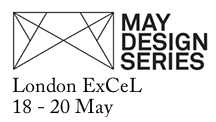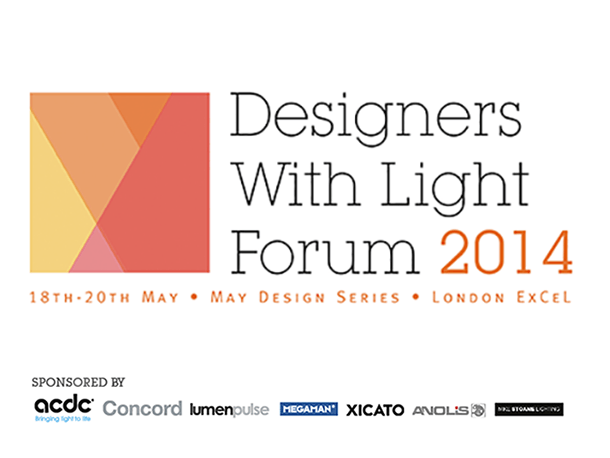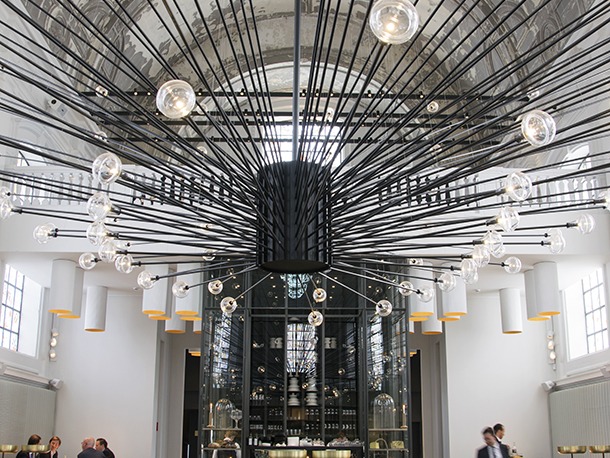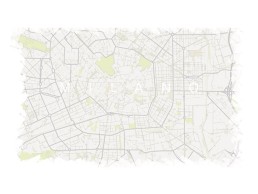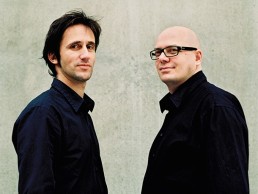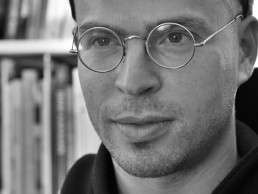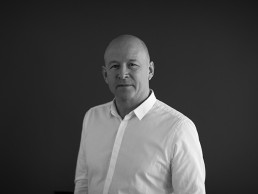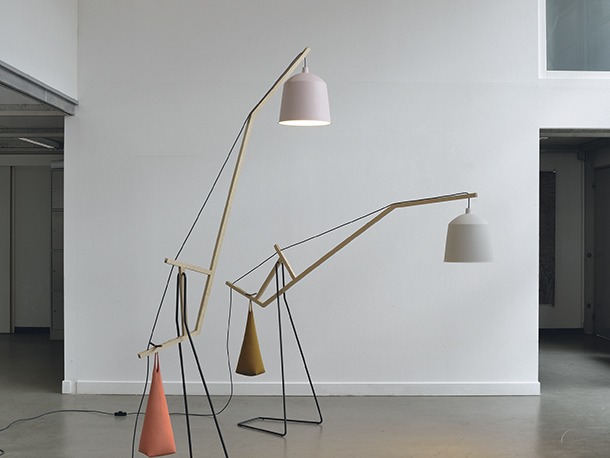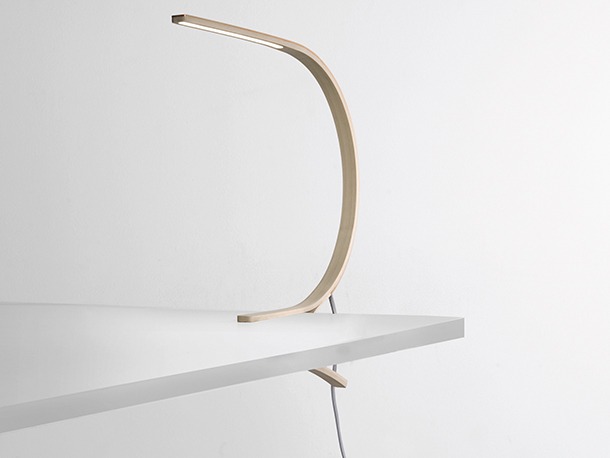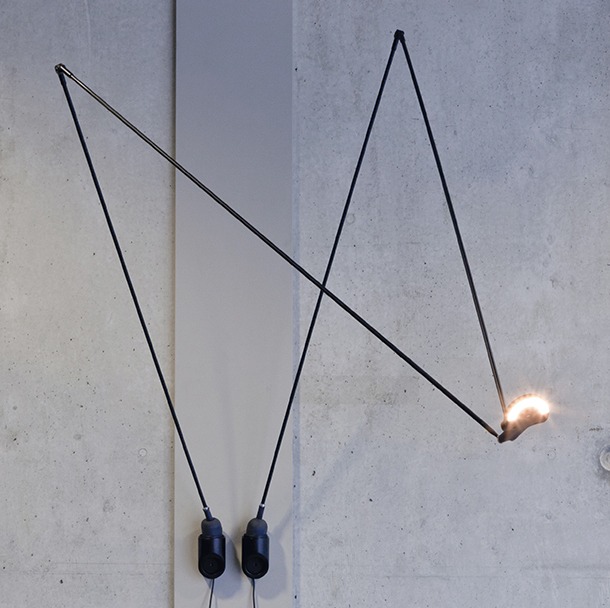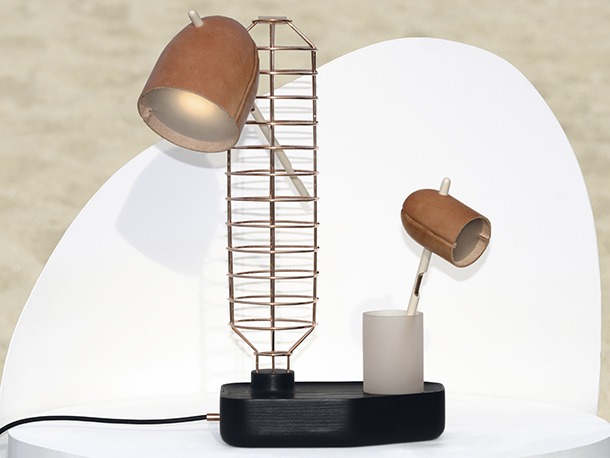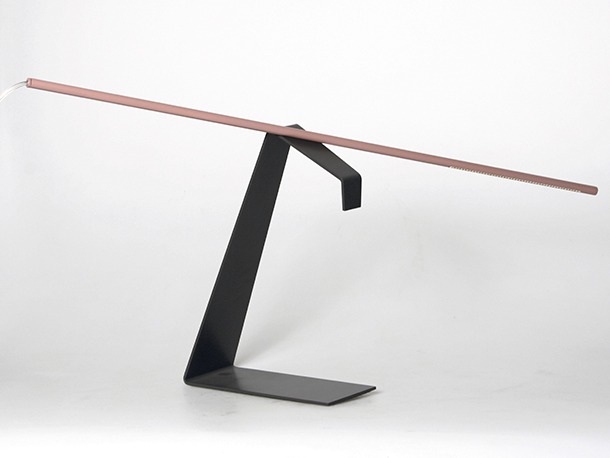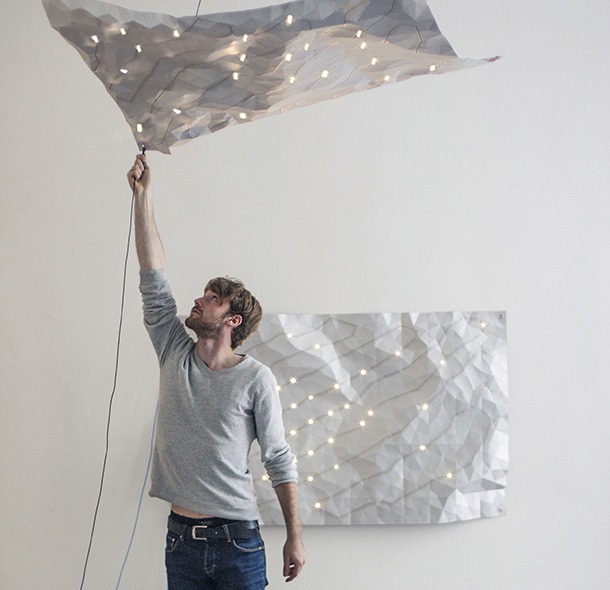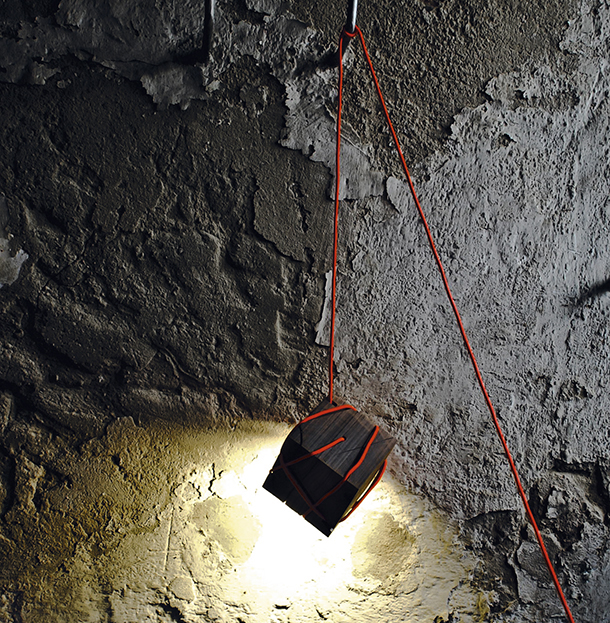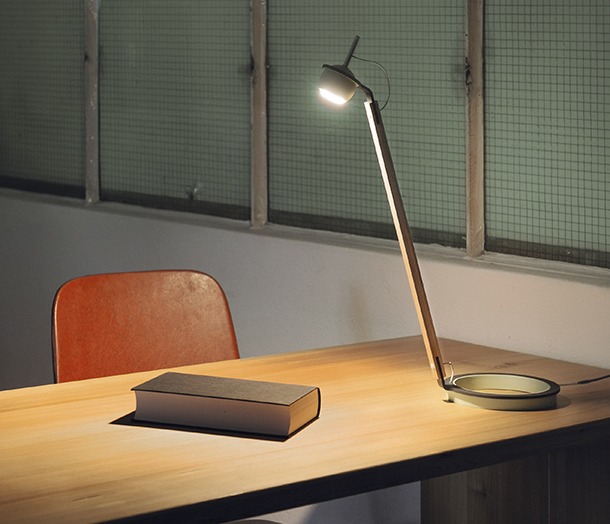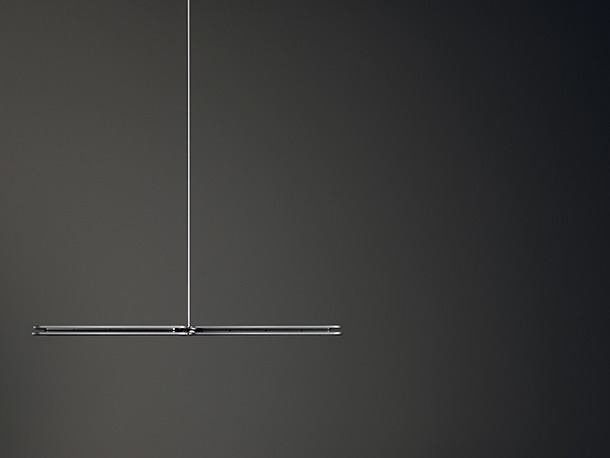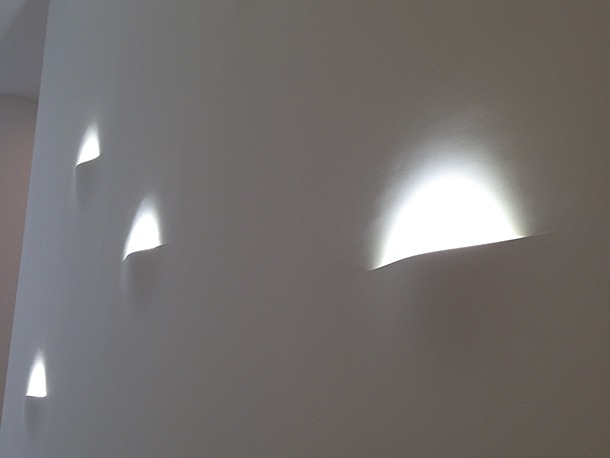Pran
About 50 different kinds of lamp units can be created from the selection of pressed metal elements in the Prān lamp range. The shapes and textures used are inspired by Indian culture.
ISSUE SEVEN
INSIDE ISSUE #07:
Éclectic • Paris //
The Jane • Antwerp //
Folio: Ippolito Fleitz Group //
Calendarc //
May Design Series Preview //
Designers With Light Forum //
Profile: Terence Woodgate //
Profile: Joost Heremans //
Light + Building // Young Design //
Comment: Milan - A Designer’s View //
Edit By Designjunction //
Milan Gallery //
If...
May Design Series 2014 opens this Sunday
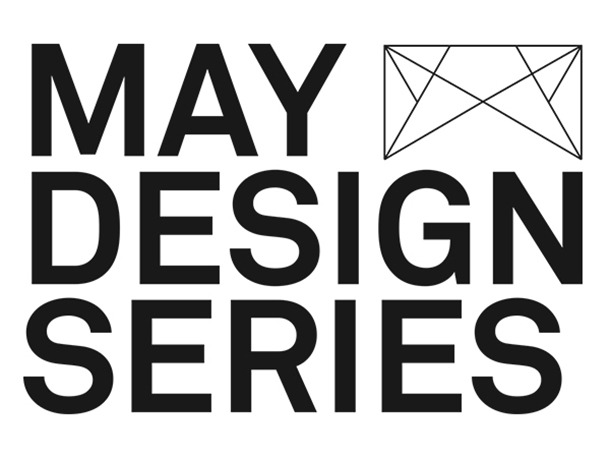
Running from Sunday 18th to Wednesday 20th at ExCeL London, the May Design Series includes a Lighting section, organised in partnership with darc and mondo*arc magazines, which will allow visitors to discover architectural and decorative lighting solutions.
Exhibitors include Applelec | Astro Lighting | Castro Lighting | Dark | Ebb & Flow | iGuzzini | KKDC | Muunlight | Philips | Preciosa | Sharon Marston | Spanlite | Vivid Lighting | Wandsworth | Xicato and more.
This year also see a return of DX Freight, a series of shipping containers each containing highlights from different design shows around the world.
The four crates will be curated by those from industry which include:
Paul James, Editor, mondo*arc – encapsulating Light + Building
Bethan Ryder, Luxury News Editor, Telegraph Luxury – best bits of Maison et Objet Paris
Johnny Tucker, Editor, Blueprint – unearthing the gems at Milan
Tobias Lutz, Managing Director, Architonic – rounding up IMM Cologne
Running alongside May Design Series, the inaugural Designers With Light Forum will provide a space for a range of talks from - and between - different design discipiplines. Architects, Interior Designers, Manufacturers, Lighting Designers and Product Designers will take to the stage to discuss no just the power of good lihgting design, but the importance of collaboration between the professions.
MAY DESIGN SEREIS OPENING TIMES
Sun 18 May - 10.00 - 18.00
Mon 19 May - 10.00 - 20.00
Tue 20 May - 10.00 - 17.00
Designers With Light Forum 2014
The Designers With Light Forum is a new feature taking place in a specially built seminar area on the show floor. Expanding its scope beyond that of the standard lighting conferences, the Forum will include architects, interior designers, clients and product designers all talking about how light influences their work.
The Designers With Light Forum is free to attend. Simply register for the May Design Series using the online form: www.maydesignseries.com
SUNDAY 18TH MAY 2014
11.00am
PRODUCT DESIGNER / MANUFACTURER
Terence Woodgate / Ciaran Kiely, Project Marketing Manager, Megaman International
Differences in Design
Terence and Ciaran talk about the differences in approach between designing for yourself and designing for a company.
12.15pm
ARCHITECT / PRODUCT DESIGNER / INTERIOR DESIGNER
Joost Heremans, Associate Partner, Foster + Partners; Director, Muunlight
Learning from Architecture in Product Design
Joost will tell the story of how he gained inspiration from the architecture of the basilica in Venezay, Burgundy, France to make the Lightcatcher, a fusion between interior design and fashion design.
1.30pm
LIGHTING DESIGNER
John Bullock, Principal, JBLD
John Bullock Plays By The Rules - A Conversation About Residential Lighting Design
More than any other field of lighting design, schemes for someone’s home brings with it an intense depth of detail. As the projects roll by and the client conversations become more and more philosophical, it has become obvious that there is an underlying matrix of rules and guidelines that inform every project. Here, for the first time, John Bullock will unveil his Rules of Three…
2.45pm
INTERIOR DESIGNER / LIGHTING DESIGNER / MANUFACTURER
Emma Cogswell, IALD; Gwenda Jones, SBID; Ian Stanton, iGuzzini
Lighting for Interior Designers
A panel discussion about the specification of lighting for interior designers by professionals from the lighting design, interior design and manufacturer professions.
MONDAY 19TH MAY 2014
11.00pm
LIGHTING DESIGNER / CLIENT
Mark Major, Principal, Speirs + Major / Richard Meier, Partner, Argent Group
Light And Darkness In King’s Cross Central
An approach to the lighting of public space in one of London’s largest and most celebrated urban renewal projects.
12.15pm
LIGHTING DESIGNER / ARCHITECT
Farhad Rahim, Senior Lighting Designer, ChapmanBDSP / Nicholas Ling, Partner, Foster + Partners
ME Hotel, London - Hospitality Lighting Blended With Architecture
ChapmanBDSP worked closely with Foster + Partners on an integrated lighting scheme for the ME Hotel in London based on a monochromatic concept of dark and light. Here, both lighting designer and architect discuss the creative process and the challenges of using light to create volume in the public spaces throughout the hotel.
1.30pm
LIGHTING DESIGNER / MANUFACTURER
Kevin Grant, Director, LIGHTALLIANCE / Sam Woodward, Head Of Control Systems, Havells Sylvania Europe (incorporating Concord)
The Essential Guide To Retail Lighting
Kevin and Matt explain how to use modern lighting techniques and equipment, and more efficient light sources, to provide significant reductions in energy use, whilst achieving enhanced quality and improved visual appeal.
2.45pm
ARCHITECT
Jonathan Mizzi, Owner, Mizzi Studios
Fusing Architecture With Light
Architect Jonathan Mizzi explains his passion for futurism, science and love for nature characterising the studio’s design ethos.
4.00pm
LIGHTING DESIGNER
Peter Fordham, Director, DHA Design
How To Light Museum Galleries - Revealing the secrets of The Mary Rose
Peter Fordham discusses approaches to modern museum and gallery lighting, including the recently opened Mary Rose Museum in Portsmouth.
5.00pm
LIGHTING DESIGNER / PRODUCT DESIGNER / MANUFACTURER
Dan Hodgson, Design Director, acdc
The Journey Of Light... inspirational product design
acdc’s Daniel Hodgson will discuss his changing role within the lighting industry from Lighting Designer to Design Director and how this transition has influenced the acdc product design process in creating award winning products. Daniel will focus on where his inspiration has come from for their most recent projects, how LEDs have allowed acdc to consider new form factors in product design, the importance of prototypes, global market feedback and trying to get into the mind-set of a lighting designer in the testing phase.
6.00pm
LIGHTING DESIGN SOCIAL EVENT
Light Collective presents The Lighting Design Family Tree sponsored by Xicato
When Sharon Stammers and Martin Lupton set up Light Collective they realised that they are the bastard love child of Andre Tammes and Miles Pinniger, two of the pioneers of the UK lighting industry, with a good chunk of foster care from LightMatters and BDP. This spurred them to try and create a map of the UK lighting industry. That was back in 2011. Things have moved on from then. It’s about time there was an update... a live update. With alcohol.
TUESDAY 20TH MAY 2014
11.00pm
PRODUCT DESIGNER
Eoin Billings, Partner, Billings Jackson Design
The Designer’s Role In Redefining Light
The fundamental technology shift from analogue to digital light represents an extraordinary, once in a lifetime opportunity. Designers and architects are in a position to play a pivotal role in redefining the market. It is the designer’s role to interpret these needs and to drive industry. It is a great opportunity.
12.15pm
LIGHTING DESIGNER / CLIENT
Maida Hot, Managing Director, GIA Equation / Will Montague, Development Executive, Chelsfield
Digital Façade Lighting For The Knightsbridge Estate
The newly completed exterior lighting installation for the Knightsbridge Estate is on one of the first steps in realising Chelsfield’s overall vision for the 3.5 acre estate between Harrods and Harvey Nichols to become one of the most prominent retail assets in London.
1.30pm
TECHNOLOGY RESEARCHER
Paul Littlefair, Head Of Lighting, BRE
Selecting And Planning Lighting Controls
Paul Littlefair describes new BRE guidance on how to select controls that are appropriate to the space (daylit or non-daylit, high or low occupancy) and how it is used.
2.45pm
LIGHTING DESIGNER / ARCHITECT
Richard Morris, Lighting Designer, Arup / Charles Valla, Architect, AZPML
New Start For New Street - A Study In Façade Glare Control
Due to be completed in 2015, the redesigned Birmingham New Street train station has undergone detailed glare studies by Arup to ensure its new façade, designed by AZPML, does not dazzle train drivers and members of the public.
4.00pm
LIGHTING DESIGNER / ARCHITECT
Laura Phillips, Design Director For Lighting, Buro Happold / Patrick Arends, Associate, Mecanoo
Library Of Birmingham - The Design Challenges Of Meeting BREEAM Excellent Standards
Patrick Arends of Mecanoo and Laura Phillips of Buro Happold Lighting will take you through the design challenges and the process involved to achieve the creatively striking building, while achieving the very demanding energy targets set by Birmingham City Council.
The Jane
For those who hold the gastronomic arts in near religious regard, the location of new restaurant The Jane will seem pleasingly appropriate. The brainchild of Michelin Star chef Sergio Herman and his colleague Nick Bril, working in collaboration with design practice Piet Boon, The Jane occupies a former military hospital chapel in the Groen Kwartier of Antwerp, Belgium.
In keeping with the Piet Boon belief in authenticity, functionality and the use of materials that ‘age beautifully’, the chapel interior retains much of its pre-existing character. Only essential refurbishments were carried out, with much of its ‘crumbling’ aesthetic preserved and incorporated in to the finished look. Modern touches include a glass encased kitchen, a kind of culinary shrine standing in place of the altar; a series of modern-themed stained-glass windows by Studio Job; and a collection of bespoke light pieces by Beirut-based .PSLAB.
On entering, diners are greeted by a series of white corrugated, cylindrical, ceiling-mounted fixtures. Their glowing brass interiors deliver a rich warmth that contrasts with the surrounding white stonework and black decor. Similar touches are provided by brass table lamps that rise above the seating, and bubble-like, blown-glass wall fixtures.
The undoubted centrepiece of the restaurant is .PSLAB’s gigantic, 800kg chandelier, an explosion of blackened copper-plated steel rods radiating from a black cylindrical hub above the centre of the room. Each of the 150 rods is tipped by a hand blown, Czech glass bubble, illuminated by a 4.5W LED lamp. The chandelier has a maximum radius of 12m by 9m, with some rods finishing just 2.75m above the ground. In doing so, the piece takes on a much more intimate, human scale than its size would suggest, linking diners with the vaulted ceilings above.
Éclectic
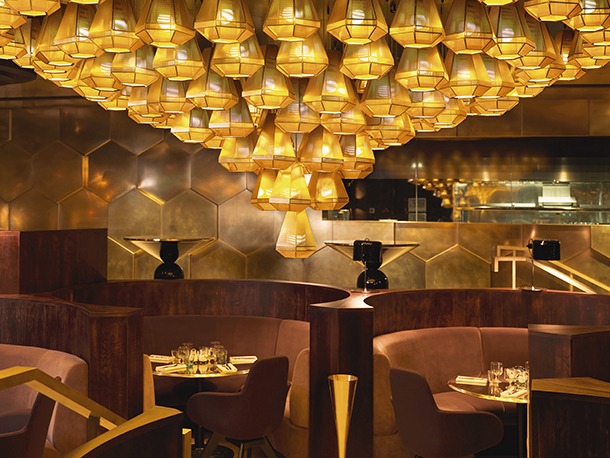
Since their first forays into the hospitality industry back in 1986, Fabienne and Philippe Amzalak have provided the heart and soul to a series of high-end dining experiences, each time collaborating with some impressive names from the worlds of both gastronomy and design. Having previously worked with the likes of Philippe Starck on the redesign of critically lauded Parisian venues Bon and Ma Cocotte, the husband and wife team turned to another star of contemporary design, Tom Dixon, for their new project Éclectic.
The Amzalak’s concept for Éclectic - to bring together a mix of clientele, from the midday shopper to the business luncher, and to serve up a selection of culinary styles – is well suited to Tom Dixon’s design aethetic, particularly his 2012 collection of objet trouvé style pieces, also called Eclectic and which feature throughout the new restaurant.
The project was taken on by Design Research Studio, the interior design practice set up by Dixon in 2002. In constructing a visual identity for the venue, they applied their philosophy of connecting design with architecture, and of creating links between the designed environment and its target audience.
Éclectic is located within the Beaugrenelle Centre, a 1970s shopping complex that re-opened in October last year following a multimillion Euro redevelopment. Sitting alongside the Seine in the 15th Arrondissement of Paris, a short walk from the Tour Eiffel, the Beaugrenelle is a trio of interconnected buildings occupied by mid- to high-end brands. The restaurant occupies the sixth floor of the Magnetic building, in a space that looks out towards the Seine.
While much of the Centre has been given a modern makeover of clean, white surfaces, Design Research Studio have created a scheme for Éclectic that actively celebrates the ’70s structure, stripping the space back to its concrete bones. This brutalist aesthetic is balanced by the generous use of polished brass to give the interior a golden glow of glamour. This theme is used to great effect in the wall detailing that frames the view through to the kitchen: an interlocking pattern of hexagonal shapes (a nod to the seventies’ love of geometric and modular design) that covers large areas like outcrops of columnar basalt - a seam of metal set within the concrete ‘rock’ of the building.
This hexagonal motif is repeated throughout the venue often offset by circular patterns, cutting into or encompassing their interlocking geometry. It is seen in the shape and arrangement of the private dining booths and, most noticeably, in the clusters of Tom Dixon Cell pendants that hang above selected tables in the main dining room.
The Cell is constructed from layers of minutely etched, polished brass, folded into a geometric, elongated bell with hexagonal cross section. The linear perforations in its sides cast an intricate pattern of shadows on the surrounding walls, floors and ceilings. When multiple pendants are used, this effect is heightened as stripes of light and shadow intersect and overlap.
Circular acoustic panels, which hang overhead in the extended height created by stripping back all ceiling surfaces, provide a base plate from which the lighting clusters hang, framing them and accentuating their presence.
These acoustic panel-and-pendant installations were created in collaboration with UK decorative lighting specialist Chelsom.
Having worked successfully together on the ongoing Mondrian London hotel project, Design Research Studio commissioned Chelsom to produce the circular ceiling rafts. In total, ten pieces of varying sizes were installed. Constructed from noise reducing foam and grey flocked to fit with the look of the room, each raft features concealed LED uplights, used to pick out sections of the ceiling above.
Chelsom also helped create Écletic’s chandelier centrepiece. 124 gold Cell pendants are suspended from a black, powder-coated steel frame. By increasing the drop length of these pendants in concentric rings, they form a metallic floret of light, interlocking neatly together, as was always intended in their initial design. All Cell pendants are fitted with a brass-tipped Megaman Crown Brass 7 Watt 230v lamp, specifically designed for the collection to provide the energy savings of an LED along with the required light dispersion and appropriate aesthetic appeal.
Further Tom Dixon lighting can be found throughout the restaurant.
A row of Bell table lights runs between the back-to-back banquette seating in one section of the room. Bell comprises a pair of domed shapes - one suspended over the other - formed from chrome plated pressed steel. Highly polished to give it a mirror-like surface, it reflects (and therfore adopts) the character of the surrounding space.
Polished metal pieces, particularly copper and brass, are used extensively throughout Éclectic, such as the Base Copper Floor Light. Part of Tom Dixon’s Base Collection it combines a highly polished copper shade with a traditional matt textured black cast iron base.
More iridescent than shiny, the roughly finished metallic forms of the Lustre collection hang above the window seating. Each pendant in the range is handmade in a family-run factory in the Netherlands. Its distinctive sheen is created using a ‘top-secret glaze containing minerals and precious metals’.
A row of shallow copper-effect shades run alongside the front window of the restaurant. Custom designed by Design Research Studio, they are produced from vacuum metalised polycarbonate.
Eclectic in name and nature, the venue’s mix of the stark and the shiny, the stone cold and the golden-glowing, make it an incredibly successful French first for Design Research Studio.
www.tomdixon.net/designresearchstudio
A Designer's View
As an Architectural Interior Designer, new lighting trends are always a welcomed discovery as they not only inform a part of our overall vision, but also often inspire the creation of our own pieces. Last year we were grouping chandeliers in clusters, as a result of inspiration from trade shows; different heights, and different styles, with unusual and dramatic effects.
Salone del Mobile in Milan, as always, was exceptional on the design and lighting front, with fantastic displays from exhibitors, many not allowing photographs for obvious reasons. All the major contenders were using scale; lights that were grand statement pieces, which was refreshing after years of seeing ceilings covered in ‘down lights’.
Chandeliers were huge and ostentatious, yet looked glamorous, with many having a more contemporary feel. Wall lights were also scaled up. The Visionnaire stand was superb with larger than life wall lights and matching chandeliers. However, the star of the show for me was Guadarte, whose stand was lit to perfection, displaying just the right amount of drama, with brilliant use of layers of light. All their light fittings, be it ceiling, wall or table lamps, were large and dramatic with great effect, and the perfect amount of accent lights.
RGB played a big part this year, carefully hidden in furniture, creating different moods using remote switching. Kitchens should not be left out either as there were clever uses of LED in cupboards and hidden back lighting, used at opposite ends of the scale, from Brummel’s innate glamour, to Minacciolo’s industrial style. However, this year, Minacciolo’s stand did tend to leave everyone speechless, displaying a dramatically lit display that was centre stage, which stood in a pool of water, with lilies, water lettuce and ivy while ‘rain’ fell from the ceiling and bounced off the units creating an unusual sense of being outside.
Bathrooms used lighting with a subtle effect with Gessi leading the way. The ‘well being’ areas on their stand created an oasis of calm amid the Salone hustle and bustle. Colour change was used on most of the bathroom stands to promote the ‘wellness’ experience, transforming private space in the home into a ‘spa’ or ‘sanctuary’. Once again RGB was used for rain showers and the shower heads appeared to be getting larger. Tiles also got the RGB upgrade with Aparici’s extremely clever and highly effective Sonar Up range.
The use of lighting to blur outside and inside space was also visible this year, something we have been working on and creating for our clients over the last ten years. The advent of sliding walls and bifold doors had led to an increase in these spaces becoming part of the living/entertaining areas.
Still going strong was the industrial look as a contrast to the high end glamour. Filament light bulbs were still in demand, however the new addition this year seemed to be IP69 rated floor and table lamps for outdoor use, crossing the boundaries from inside to out, and allowing flexible lighting in the outdoor area, something that has not been possible before, apart from moving the odd uplight a few inches.
As well as looking to the shows like Salone del Mobile, we also like to know what is available for architectural use and layering, Lucy Martin at John Cullen is an inspiration, and her knowledge invaluable.
And it goes without saying lighting control was in evidence be it Rako, Lutron or Crestron. One light will make a statement, but it is the layering and control that makes an interior or exterior complete.
Jacqueline Cornforth is the owner of JC Interiors. www.jcinteriorsltd.co.uk
The Society of British and International Design (SBID) is Britain’s standard-bearer organisation to the profession of interior design and the national organisation representative at the European Council.
For more information visit www.sbid.org
Ippolito Fleitz Group
Based in Stuttgart, with offices in Zurich and Seoul, Ippolito Fleitz Group is an internationally renowned multidisciplinary design studio that works with clients to develop architecture, products and communication that fit within a client identity, while also offering something unique in their own right.
Established by Peter Ippolito and Gunter Fleitz in 2002, the group now comprises a team of 37 designers, covering a wide field of design, from strategy to architecture, interiors, products, graphics and landscape architecture, each contributing specific skills to the alternating, project-oriented team formations.
Simply put, their goal is to give the complex identity of their clients an adequate shape.
Naturally, light is a vital part of their design focus. “Light is a major factor in the orchestration and creation of drama within a space,” says Ippolito. “Lighting underpins emotion, creates focal points, and orients. Above and beyond simple general lighting, especially in retail, excellent lighting is a critical factor that influences perception and creates a visual hierarchy. It is becoming an ever more important aspect of the branding of any corporate identity.”
Joost Heremans
As an architect and designer, Joost Heremans’ credentials are beyond dispute. His first role when he joined Foster+Partners in July 2002 was to work on what would become an award-winning project, the Leslie L. Dan Pharmacy Building at the University of Toronto, Canada. It was an auspicious start to what would become an impressive roll call of major projects: the Public Library in New York; a carbon-neutral resort in Cuba; the five-star ME hotel in central London; a design for a 600m tower in Chicago; a headquarters tower in Calgary, Canada; the 2022 World Cup football stadium in Qatar, a Children Hospital for the University of Iowa, a 300m high residential tower in Beijing and the ETFE Khan Shatyr tensile structure in Astana, Kazakhstan.
In 2006, Heremans was promoted to Associate before stepping up to Associate Partner a year later.
Outside of his architectural work - or rather, running alongside it - Heremans has a passion for designing large-size pendant light structures and last year launched the Lightcatcher. Three years in the making, the piece is a fusion between interior design and fashion. Launched during the 2013 London Design Festival and Paris Design Week under the Muunlight.com brand, the piece is a reinvention of the pendant lampshade. Viscose fabric is stretched across a wooden frame to work a three dimensional ‘light-box’, reflecting the light onto the ceiling whilst creating a stunning lit effect with the choice of fabrics.
Heremans gained inspiration for the design of Lightcatcher when studying the basilica in Venezay, Burgundy, France, a story you can hear in full at the Designers With Light Forum. The Lightcatcher itself will also be on display as part of the May Design Series exhibition.
Terence Woodgate
For two weeks at the beginning of May, the Libby Sellers Gallery in Central London was transformed into a pop-up show room to mark the launch of a new lighting collection from renowned British designer Terence Woodgate.
Though Woodgate has been behind many successful lighting and furniture products in the past, the new Solid range is the first to be launched under the designer’s own Terence Woodgate lighting brand.
“It’s something I’ve been thinking about for a very long time,” he explains. “I’ve always been envious of people like Ingo Maurer, who’s been doing his own things for many years. I’m very detail-focused when I design, so by setting up my own company I can give every part of the production process the same attention.”
Over his 20 years designing for architectural lighting manufacturers like Concord, Woodgate has been responsible for many hugely successful luminaires, but with the launch of his own brand, he has been able to adopt a much more holistic design approach, looking at every aspect of the process from the smallest star washer used in its manufacture to the final product packaging and even the design of the installation instructions - a job for which he drafted in graphic designer Charlie Smith and illustrator John See - ensuring a detailed design experience for everyone from the installer to end user.
The Solid series exploits the many qualities of LED lighting technology, in particular focusing on the rich variety of interesting materials that can now be used in close proximity with the light source.
The range is designed around a GU10 reflector lamp, set deep within the fitting to prevent the LED’s high luminous flux from becoming uncomfortable, while also ensuring the lamp is effectively cooled by passive airflow and so provide optimum efficiency and lamp life.
“I look at the way a number of designers have just plopped an LED lamp into a shape and I realise that they haven’t really understood all of the constraints involved,” explains Woodgate. “As Charles Eames said, if you design knowing every constraint then you don’t have to compromise, and it’s true: if you design being aware of the construction constraints, the material constraints, the component constraints, the factory, the packaging… if you’re aware of all of these then hopefully you come up with a design that satisfies all the criteria and is in itself a better design.”
Woodgate’s experience and understanding of LED technology make him well placed to produce a range that can satisfy the end user both aesthetically and technically. “I want to make sure that they get a product that exceeds their expectations,” he says.
For the pop-up launch event, Woodgate teamed up with lighting manufacturer Megaman, whose new Ingenium Bluetooth system was used to present the pieces at their best and demonstrate how they could be controlled in a real world setting.
Megaman’s Ciaran Kiely will be in conversation with Woodgate at the Designers With Light Forum on Sunday 18th May, discussing the product design process.
DESIGN PLUS YOUNG PROFESSIONALS
BEST OF DESIGN PLUS
"a floor lamp"
Miriam Aust, Sebastian Amelung
info@aust-amelung.com
www.aust-amelung.com
Kunsthochschule Kassel
“a floor lamp” is based on the simple mechanism of a beam balance. A long beam extends across the room and balances a lampshade on one side and a sandbag on the other. The sand- bag can be moved manually to four positions for different lighting situations. Reduction and simplicity define the form as well as the function of this luminaire. Its form and movement give it its unique character. The combination of the two coloured parts of the floor lamp, sandbag and lampshade can be chosen freely. The colour concept features light and dark tones of grey, yellow and pink. The lamp can be adjusted manually to various heights in accordance with the sur- roundings. A steel pin enables the user to mount the sand bag in four different positions. In each of these positions the lamp finds the balance itself.
BEST OF DESIGN PLUS
Optimist
Cosima Geyer
cosima@cosima-geyer.com
www.cosima-geyer.com
“Optimist” is a delicate clamp luminaire made of bent maple wood, which can be clamped to any table with a thickness ranging from 10 to 40 mm. Its clamp is made of a unique bending wood, which can be bent to extremes, thus creating the requisite tension without ever breaking. The project focused on finding a delicate and innovative form to match the character of LEDs, and to express the respective possibilities. The luminaire is extremely thin, which is only possible through the use of LEDs (due to minimal heat absorption, for the most part towards the back, and the small size of the LEDs). The back of the luminaire is made of aluminium, in order to ena- ble swift heat distribution and absorption, and thus longer-lasting LEDs. The LED strap is fixed to the aluminium. The cables (textile cables) run in a channel between the wood and the aluminium and exits the corpus through a hole in the aluminium.
--------------------
SPECIAL MENTION
Extended Light
Markus Bauer
info@markus-bauer.eu
www.markus-bauer.eu
The design of the “Extended Light” draws attention to the effect of movement on both man and space. Movability is the central design element and the luminaire changes its appearance every time it is moved. The head is kept deliberately plain so that we focus on the movable arms, which allow flexible but precise illumination across a range of 1.80 m. The look and feel of the lighting fixture changes with every adjustment. The arms meet in the lamp head and close the electric circuit, forming a semicircle which features the illuminant. This uses LED bulbs. The luminaire can be dimmed to deliver precisely the intensity of light desired. A theoretical investi- gation of the movability of everyday objects and our perception of movement marked the start- ing point of the project. The effect of movable objects on people and the associated value added is of specific importance.
--------------------
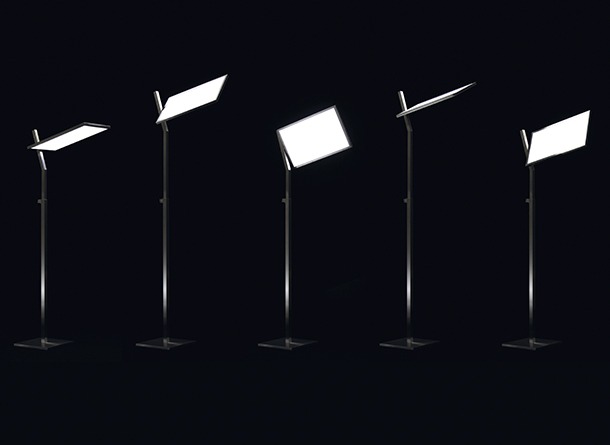
SPECIAL MENTION
Screen
Anselm Kempf
ansi-k@web.de
The purist design of the standard lamp “Screen” is distinguished by clear lines. An eye-catching bend at the upper end gives its appearance special dynamics, while the aluminium surface gives Screen an elegant, state-of-the-art appearance. The name comes from the manner in which the light-emitting panel is constructed, which is based on the principle of a LCD screen. The light panel can be rotated 360°, the height is continuously adjustable from 142 to 222 cm. Together with the large luminosity of the panel, “Screen” becomes a highly versatile luminaire, be it for direct or indirect lighting, as a wall washer or torchiere, or of course for a combination of the two types of use through flexible pivoting of the panel. For added convenience for finding the luminaire in the dark, the power button glows permanently. With regard to ecology, the luminaire stands out for high efficiency of the applied illuminants. These achieve power of 14.4 W and emit 1,296 lm, which relates to energy efficiency of 90 lm/W.
--------------------
Standard Table Lamp
Calen Knauf
Calen@knaufandbrown.com
www.knaufandbrown.com
--------------------
Jella Magnetisch
Lena Schlumbohm
lena.schlumbohm@alumni.fh-aachen.de
www.lenaschlumbohm.de
--------------------
Tetractory
Magdalena Kovarik
hello@magdalenakovarik.com
www.magdalenakovarik.com
--------------------
Falling Cube
Marlen Haeselbarth
marlen.haeselbarth@gmail.com
www.vauzwoelf.de
--------------------
post@moritzputzier.com
www.moritzputzier.com
--------------------
P.Lamp'
Yifan Zhang
contact@apostrophe-ivandesign.com
www.apostrophe-ivandesign.com
--------------------
www.light-building.com
Atmos
Looking like a cut on the wall, the Atmos LED fitting from Brick in the Wall, on the Enigma stand, is a great example of how plaster-in lighting can seamlessly transform a space. Quick and easy to install, the Atmos comes with a 7W, 600 lm, high output LED, available in 2700K, 3000K, 4000K and - launching at May Design Series - the new 2200K colour temperature.
www.brickinthewall.eu

